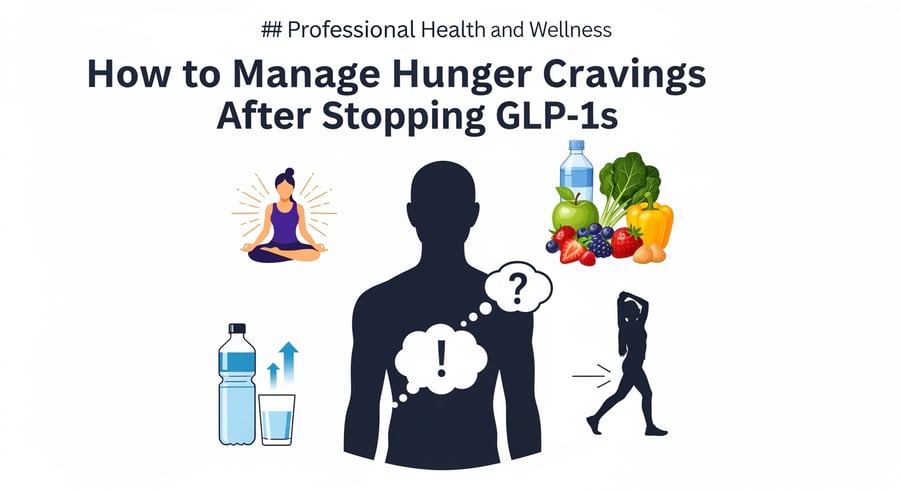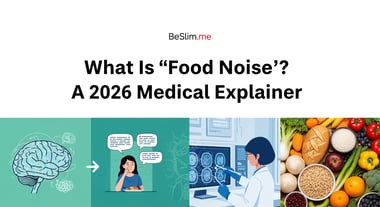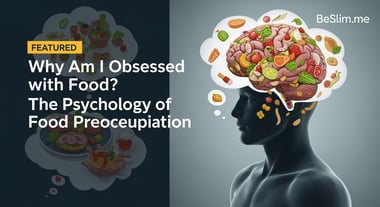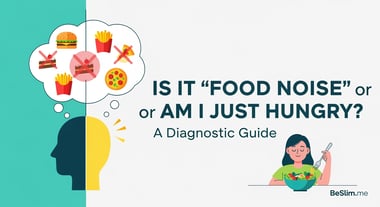Hello, I'm Master Kim, your Behavioral Psychologist and Solution Consultant at BeSlim.me. If you're reading this, you're likely navigating the challenging transition after stopping GLP-1 medications like semaglutide or tirzepatide. These drugs are powerful tools for weight management, but the return of intense hunger cravings can feel overwhelming. You're not alone in this struggle—it's a common experience shared by many who've relied on these medications. This is completely normal, and it's a sign that your body and mind are readjusting. In this Q&A guide, we'll explore the psychological and behavioral reasons behind these cravings and provide practical, science-backed strategies to help you manage them sustainably. Let's dive in with empathy and actionable insights.
Why Do Hunger Cravings Return So Strongly After Stopping GLP-1s?
Understanding the "why" behind your hunger cravings is the first step toward regaining control. When you stop GLP-1 medications, it's not just a physical shift—it's a complex interplay of hormonal, psychological, and behavioral factors. These drugs mimic the GLP-1 hormone, which slows digestion, increases feelings of fullness, and reduces appetite by influencing brain signals. Abruptly halting them can lead to a rebound effect, where your body's natural hunger hormones like ghrelin spike, making you feel ravenous.
From a psychological perspective, this rebound often ties into habit loops. During treatment, GLP-1s disrupt your usual eating patterns by reducing the reward signals from food, essentially rewiring your brain's response to hunger cues. When the medication stops, those old habits resurface, amplified by willpower depletion—a concept where constant self-control (like resisting cravings) drains your mental energy, making it harder to maintain discipline. Research on willpower depletion shows it acts like a muscle, fatiguing over time and leading to impulsive eating.
Behaviorally, emotional factors play a big role too. Stress from weight regain fears or lifestyle changes can trigger cortisol release, which heightens appetite and cravings for comfort foods. This stress-cortisol link creates a vicious cycle: heightened stress increases emotional hunger, which isn't about physical need but psychological soothing. Scientifically, studies indicate that hormonal imbalances post-GLP-1 cessation can mimic withdrawal symptoms, similar to those in addiction, where the brain seeks to restore balance through overeating. For instance, studies on GLP-1 agonist discontinuation highlight rebound hyperphagia, or excessive hunger, due to rapid changes in gut-brain signaling.
In simple terms, imagine your appetite system as a seesaw: GLP-1s tip it toward satiety, but stopping them swings it back hard toward hunger, often exacerbated by ingrained habits and emotional triggers. This isn't a failure on your part—it's your biology adapting. By recognizing these mechanisms, you can approach management with compassion rather than frustration.
Actionable Strategies to Manage Hunger Cravings
Now that we've diagnosed the "why," let's focus on solutions. Below, I'll outline five practical, step-by-step strategies rooted in behavioral science. Each one is designed for immediate implementation, with examples to illustrate how they fit into daily life. The goal is sustainable change, building new habits that outlast the cravings. Remember, consistency is key—start small and track your progress.
Strategy 1: Rebuild Mindful Eating Habits
Mindful eating counters the automatic habit loops that drive post-GLP-1 cravings by encouraging awareness of true hunger versus emotional urges.
- Pause and Assess: Before eating, take a 10-second pause to rate your hunger on a scale of 1-10. Ask yourself, "Is this physical hunger or boredom/stress?"
- Engage Your Senses: Eat slowly, focusing on the taste, texture, and aroma of your food. Set a timer for 20 minutes per meal to stretch it out.
- Journal Your Triggers: Keep a quick daily log of when cravings hit and what emotions precede them. Over a week, patterns will emerge, like cravings spiking after work stress.
For example, if you feel a sudden urge for snacks in the evening, pause to note it's linked to winding down from the day. This awareness, supported by mindful eating techniques reducing emotional overeating, can reduce impulse eating by 20-30% in studies.
Strategy 2: Incorporate Hunger-Delaying Rituals
Delaying gratification builds resilience against willpower depletion, training your brain to tolerate discomfort without immediate indulgence.
- Set a 10-Minute Rule: When a craving strikes, commit to waiting 10 minutes. Use this time for a non-food activity, like deep breathing or a short walk.
- Hydrate First: Drink a full glass of water or herbal tea during the delay—dehydration often masquerades as hunger.
- Reward Substitution: After the delay, if hunger persists, opt for a healthy alternative like veggies with hummus, reinforcing positive habits.
Imagine you're hit with a post-dinner chocolate craving: Wait 10 minutes while sipping tea, and you might find the urge fades. This draws from behavioral psychology's delay discounting, helping break the instant-reward cycle that GLP-1s temporarily masked.
Strategy 3: Manage Stress to Reduce Emotional Hunger
Since stress amplifies cortisol-driven cravings, proactive stress management can dampen the emotional pull toward overeating.
- Daily Stress Check-In: Spend 5 minutes morning and evening identifying stressors and rating them. Use a simple app or notebook.
- Practice Progressive Relaxation: Try muscle tensing and releasing from toes to head, or guided meditation apps for 10 minutes daily.
- Build a Support Ritual: Connect with a friend or online community weekly to share experiences, reducing isolation-fueled eating.
For instance, if anxiety about weight creeps in, a quick relaxation exercise can lower cortisol, preventing a binge. This approach is backed by evidence showing stress reduction techniques effectively curb emotional eating.
Strategy 4: Optimize Your Environment for Success
Environmental cues heavily influence behavior, so redesigning your surroundings minimizes triggers and supports better choices.
- Kitchen Audit: Remove high-craving foods from easy reach; stock visible areas with fruits, nuts, and prepped veggies.
- Portion Control Tools: Use smaller plates and pre-portion snacks to avoid mindless overeating.
- Routine Anchoring: Tie healthy habits to existing routines, like preparing a protein-rich breakfast right after your morning coffee.
Picture a scenario where junk food is hidden in a high cabinet—out of sight means out of mind, reducing impulsive grabs. Behavioral science emphasizes "nudges" like these for long-term habit change.
Strategy 5: Track and Celebrate Small Wins
Positive reinforcement strengthens new neural pathways, making sustainable behavior changes more likely over time.
- Daily Tracking: Use a journal or app to log successful craving managements, noting what worked.
- Set Micro-Goals: Aim for one craving-free afternoon per day, building up gradually.
- Reward Non-Food Wins: Treat yourself with a relaxing bath or new book after a successful week, not food.
For example, after navigating a tough day without giving in, celebrate with a hobby. This leverages operant conditioning to make healthy choices rewarding, fostering lasting resilience.
These strategies aren't about perfection but progress. Implement one or two at a time to avoid overwhelm, and adjust based on what resonates with you.
Encouragement and Final Thoughts
Remember, managing hunger cravings after stopping GLP-1s is a journey, not a sprint. You've already shown incredible strength by taking this step toward sustainable health. Change is absolutely possible—with patience, self-compassion, and these behavioral tools, you'll rebuild a balanced relationship with food. You're capable of overcoming this hurdle, and every small victory brings you closer to lasting well-being. If cravings persist intensely, consult a healthcare professional, but know that you're equipped to thrive.
References
Medical Disclaimer
The content on this website is for informational and educational purposes only. It is not intended as medical advice and should not be relied upon as a substitute for consultations with qualified healthcare professionals who are familiar with your individual medical needs. Always seek the advice of your physician or other qualified healthcare provider with any questions you may have regarding a medical condition. Never disregard professional medical advice or delay in seeking it because of something you have read on this website.





Comments (0)
No comments yet. Be the first to comment!